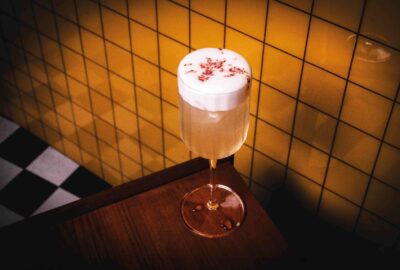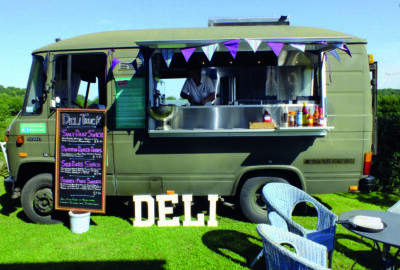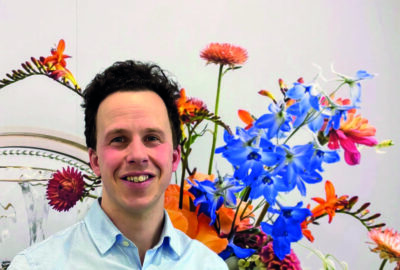Café culture has continued to boom in the UK with 80% of people who visit coffee shops saying they do so at least once a week – and 16% visiting on a daily basis. According to Mintel research, coffee shop sales are forecast to increase by 29% to an incredible £4.3billion by 2021. This growth is fuelled by innovation as new flavour trends and combinations continue to flood the market. So what does 2018 hold in store for this ever-evolving market?
The daily grind Around 55 million cups of coffee are drunk every day in the UK and our insatiable appetite for coffee is highlighted by the fact that two thirds (65%) of all Brits have visited a coffee shop in the past three months. Coffee shop usage peaks among consumers aged 16-24 (73%). However, in a space traditionally dominated by specialist coffee retailers, it is notable that as many as 44% of Brits buy their hot drinks from non-specialists. Trish Caddy, foodservice analyst at Mintel, comments: “A raft of non-specialist venues that feature barista-style coffee on their menus with takeaway functions are grabbing a slice of the coffee shop market. In the future, the top end of the market will continue to face intense competition from big pub chains, fast food chains and bakery shops that have now encroached on the coffee shop market, competing in terms of price, convenience and even geographical reach.”
Consumers today also “know their beans”, says Richard Green, head of beverage solutions, Nestlé Professional. “Whether at work, a restaurant or café, coffee lovers nationwide are often used to being able to order their favourite beverage – be that a flat white, a skinny cappuccino or a double shot latte. “It’s not just a varied menu people may expect, in some cases, even the blend or bean is a prerequisite.”
2018 trends report from the British Coffee Association
• Further rise of nitro and cold brew – 2017 saw coffee innovation start to hit the high street, and nitro coffee in particular will hit mainstream in 2018 with much broader audiences. Nitro coffee is cold brewed, put into a keg and then infused with nitrogen gas. It’s served straight from the tap and it offers that frothy and bubbly, adult-beverage feeling with a beer-like head
• Sustainability and material re-use – the industry has rapidly moved to explore and address sustainability issues across the value chain and it has been placed at the very heart of the industry. Coffee shops have started offering in-store recycling of paper cups and this is a trend that will dramatically increase in 2018 from new recyclable packaging to new recycling processes
• Signature drinks – high street coffee shops will increasingly offer signature coffee drinks, developed by in-house baristas to show off their own recipe’s and balancing of flavours
• New coffee varieties – climate change and pricing means that some coffee farmers may start to re-discover old varieties of coffee plants that are more resilient and more dependable, this could lead to brand new variety of flavours and tastes
Time for tea 165 million cups of tea are drunk every single day in the UK 18%“of all breakfasts involve tea” unfortunately its 2016 data but struggling to find anything else (MCA Allegra OOH Tea Data 2016) 58%of tea drinkers consider a premium brand to be the most important factor when ordering tea out of home Natalie Cross, out of home manager at Taylors of Harrogate, which makes Yorkshire Tea, says: “Afternoon tea is a British tradition and an ongoing resurgence in its popularity has given out of home establishments an opportunity to boost their tea sales. There is an opportunity to encourage consumer spend through introducing special afternoon tea deals, such as afternoon tea packages. We’d always recommend an afternoon tea menu includes a strong black tea, along with complementary foods such as scones, cakes and biscuits.”
“Tea with a purpose” continues to storm the market as consumers increasingly looking for drinks that provide a functional benefit, such as energy boosting, antiinflammatory, relaxing or antioxidant. In fact, over a third of Millennials say they would pay more for coffee/tea with added health benefits. Matcha is a great example of this due to its high levels of antioxidants, and turmeric – the breakout ingredient of 2017 – is now being used in specialty herbal tea drinks. Millennials are also continually on the lookout for fresh and novel experiences, something to ‘eat and tweet’ about. In response, Twinings have developed a range of indulgent Tea Lattes, packed with rich flavours to delight your tea lovers and get your tills ringing. London Fog uses a classic Earl Grey tea base, and pairs it with a hint of sweet vanilla syrup over steamed milk for an aromatic, creamy drink https://www.twinings.co.uk/blog/2017/october/london-fog.
Don’t forget the hot choc Hot chocolate is the ultimate luxury when it comes to hot beverages – and the perfect opportunity to go to town with sprinkles and toppings. You can’t go wrong with mini marshmallows and, for a double chocolate option, try new Thorntons Luxury Chocolate Flakes. Fiona Morgan, head of foodservice, Ferrero UK & Ireland, says: “As the hot drinks market has evolved, consumer expectation has grown with it. As with coffee, they now want something different and better than what they can have at home. “The launch of our Thorntons Luxury Chocolate Flakes means operators can now offer a hot chocolate that is just as good as their coffee blends – and best of all consumers will pay for it.”
Research from Ferrero found a staggering 81% of consumers are more likely to order a hot chocolate made from chocolate flakes versus standard powders. 84% of people would pay an additional 50p or more, and well over a third up to £2.
Another way to premiumise your hot chocolate is to add an aroma. Sam Rain, UK Sosa ambassador, explains: “Nothing beats a luxurious hot chocolate so why not try adding an aroma to make it that extra special. “Simply add a couple of drops of your chosen flavour using a pipette to create your new flavour explosion. By giving customers additional options to create their own favourite hot drink you’ll be creating a place to be remembered and in turn spreading the word to create more customers.”
How about trying:
Tumeric tea with ginger and/or cinnamon
Mushroom coffee
Cascara (made using the husks of coffee cherries)
Dark hot chocolate with cookie aroma
Spiced chai latte
White hot chocolate with cotton candy aroma
Salted caramel matcha tea
A bit on the side Industry research has shown that in 2017 31% of cakes bought for a snack were purchased with tea or coffee. Sweet treats also offer a great opportunity for operators to offer meal deals. Jane Deegan, Kara marketing manager says: “With coffee shops expected to see continued growth in the next 3-5 years, it’s important that outlets to update their offering to continue to capitalise on this growing trend.”
Marie-Emmanuelle Chessé, international development project manager, Tipiak, adds: “Mini desserts are a big trend that can help operators cater for customers looking for a treat with their hot drink. French patisserie lends itself well to this; macarons and éclairs not only look beautiful, but their lightness means consumers can enjoy something sweet without over-indulging.”
Hot drinks in the workplace YouGov’s 2017 survey found there was an increasing demand for increasing ‘real’ coffee in the workplace, particularly in the morning. Although instant coffee is the most likely choice (32% have it at least twice a week or more), 11% of those surveyed drink filter/cafetiére coffee and 8% espressos/cappuccinos etc. At lunchtime, tea is the most popular choice (37%) with instant coffee also important (21%).


